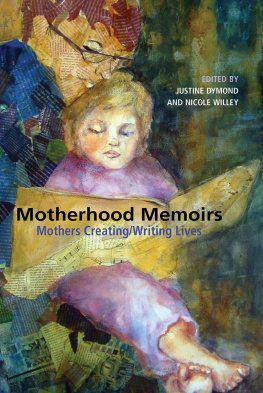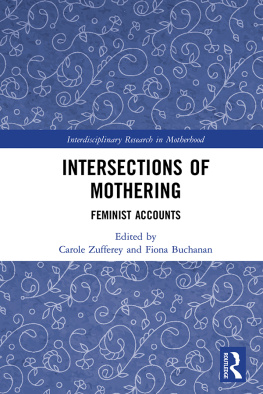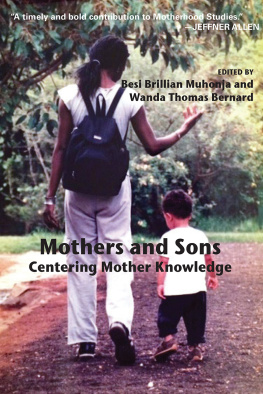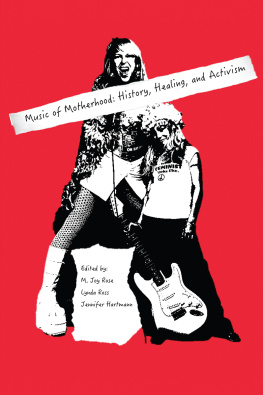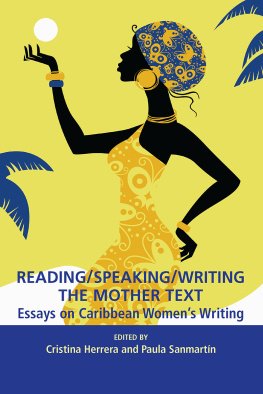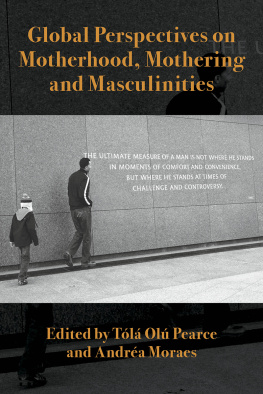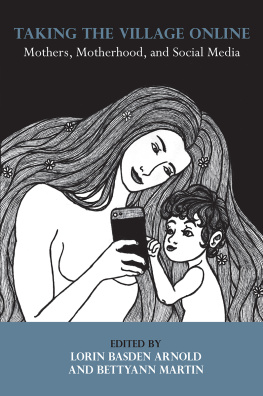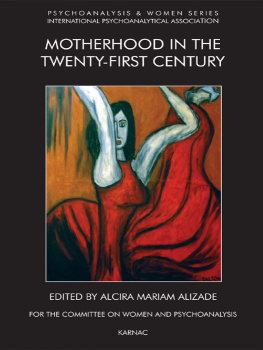Motherhood Memoirs
Mothers Creating/Writing Lives
Copyright 2013 Demeter Press
Individual copyright to their work is retained by the authors. All rights reserved. No part of this book may be reproduced or transmitted in any form by any means without permission in writing from the publisher.
Published by:
Demeter Press
140 Holland Street West
P. O. Box 13022
Bradford, ON L3Z 2Y5
Tel: (905) 775-9089
Email: info@demeterpress.org
Website: www.demeterpress.org
Demeter Press logo based on sculpture Demeter by Maria-Luise Bodirsky
< www.keramik-atelier.bodirsky.de >
Cover Artwork: Lori Lyn Greenstone, Ekphrastic Mama, 2007, collage and water media, 24 x 36 inches. Private collection.
eBook development: WildElement.ca
Printed and Bound in Canada
Library and Archives Canada Cataloguing in Publication
Motherhood memoirs: mothers creating/writing lives
/ Justine Dymond and Nicole Willey, editors.
Includes bibliographical references.
ISBN 978-1-927335-16-1
Cataloguing data available from Library and Archives Canada.
Motherhood Memoirs
Mothers Creating/Writing Lives
edited by
JUSTINE DYMOND AND NICOLE WILLEY
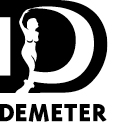
DEMETER PRESS, BRADFORD, ONTARIO
For Marjorie
J.D.
For Jacob and Isaac, who made me a mother,
and to my parents, Cheryl and Walt, who gave me the model.
N.W.
Table of Contents
Justine Dymond and Nicole Willey
Rachel Epp Buller
Yelizaveta P. Renfro
Melissa Shields Jenkins
Lori Lyn Greenstone
Pamela Douglas
Justine Dymond
Rachel Robertson
Kathleen L. Fowler
Tara McDonald Johnson
Lisa Federer
Deesha Philyaw
Nicole Willey
Acknowledgements
I would like to thank my colleagues and friends Professors Rebecca Lartigue, Jody Santos, and Nicole Willey for reading my chapter in draft form and offering insightful suggestions; Lynn Martin, Technical Services Specialist at Babson Library, and Rachael Naismith, Assistant Director for Information and Research, at Babson Library for their help with ILL loans; my partner in life, Louis Faassen, for wisdom, guidance, delicious meals, and unflagging support; Nicole Willey for imagining this entire project in the first place; and our contributors for their work and patience. Of course, there are three people without whom none of this would be possible for me: my parents, Kenneth and Rosetta Dymond, and my daughter, Marjorie Faassen Dymond.
Justine Dymond
I would like to thank Kent State University Tuscarawas for the Faculty Professional Improvement Leave that provided the time for me to do much of the research and drafting for this book, the course release that gave me time for revision, and for travel support; my colleagues and friends Andrea Adolph, Lisa Brindley, Tony Dallacheisa, Laurie Donley and Beth Osikiewicz for listening and helping me talk through both the finer and more pragmatic points of the process; Justine Dymond and Christopher Roman for reading early (and late) drafts of my chapter, and for helping it to become what it is; Beth Knapp and Jake Rader for key clerical support, and Cody Hutchison for teaching me some of the intricacies of word processing. To my sisters and brothers in the e-mail chainJanelle and Todd Moffett, Cassie and JR Rummel, thank you for listening and for being eager to read this. To my parents Walt and Cheryl Willeynot only did you provide me with support throughout this process, but you have also given me the tools for and have encouraged me to do work that is meaningful. Two people get thanked twice. Justine Dymond, my friend and complement, believed in this idea and enriched everything about this process and our final product. And, Christopher Roman, my first reader, final editor, sounding board, and also my partner in domesticity and parenting, makes my day-to-day not only possible, but pleasurable. And finally, my sons, Jacob and Isaac Roman-Willey, who have shown me, time and again, what matters, while helping me to laugh along the way.
Nicole Willey
We would like to thank Katie Barsevich for her tireless copyediting, and Springfield College for helping to support her work financially; the University Research Council of Kent State University for financial support; Andrea OReilly and ARM , now MIRCI , for providing a forum for mothers voices; and all of our contributors. You have tirelessly worked to help us achieve our collective vision for this book, and in so doing, have become the community we needed.
J.D. and N.W.
Introduction
Creating the Collection
JUSTINE DYMOND AND NICOLE WILLEY
I told myself that I wanted to write a book on motherhood because it was a crucial, still relatively unexplored, area for feminist theory. But I did not choose this subject; it had long ago chosen me.
Adrienne Rich, Of Woman Born (15)
Memoir is the record of an experience in search of a community
Nancy K. Miller, But Enough About Me, What Do You Think of My Memoir? (432)
Its hard to write and to have kids. Dont let anyone tell you that its not. You cannot get lost in the easy wind and downy flake of motherhood and then turn around, focus, and produce work. You have to be cunning, practical, and selfish. You have to steal time. Time is your enemy, your gift, your wanton desire, and you never have enough of it.
Stephanie Brown, Not a Perfect Mother (31)
T HIRTY-FIVE YEARS after the publication of Adrienne Richs groundbreaking work Of Woman Born (1976), much more has been written about mothering and motherhood. , the ubiquitous book source for almost everyone, has 461 (and counting) results under the search term motherhood memoir. In the early days of what would become a publishing onslaught, Anne Lamotts Operating Instructions: A Journal of My Sons First Year (1993) and Anne Roiphes Fruitful: A Real Mother in a Modern World. (1996) offered some of the first autobiographical accounts of motherhood that dared to speak the truth about the writers experiences as mothers. Mary Kay Blakelys American Mom: Motherhood, Politics, and Humble Pie (1994) and Susan Johnsons A Better Woman: A Memoir (1999), among others, continued a healthy trend of mothers breaking a long-held silence in the genre of memoir. As Sidonie Smith and Julia Watson note in their discussion of life writing, publishers seek the next hot topic and market particular kinds of memoirs to niche audiences ( Reading Autobiography 127). Motherhood memoir is the current hot topic, and a proliferation of these works have extended from the 1990s into the present.
In this collection, we look directly at motherhood memoirs, mothers own voices, in an effort to expand scholarly attention to this genre and to begin a discussion of its merits along with its shortcomings. In taking the motherhood memoir seriously, and in examining individual memoirs while (in many cases) sharing our own stories in a personal voice, this collection enacts a commitment to creating a community of mothers and others who are interested in transforming the institution of motherhood and mothering practices.
This book, like many, started at a conference. We were both at the beginning edge of our academic careers, and simultaneously, fairly new mothers, when we met on a panel Nicole had put together at Ne MLA one spring on the topic of the rhetoric of motherhood. Nicoles first son Jacob had been born just about a year before, and sometime during that fallthe long fall semester that brought the return to teaching/relief from constant childcare/being walked in on by a custodian while strapped to a breast pump in her office/utter exhaustionNicole realized that reading Brain, Child and LiteraryMama.com obsessively, while finally throwing Parents magazine and What to Expect, The First Year across the room, was not enough. Why did writing about mothering draw her in so much more deeply than anything else? And why did some of the voices make her angry enough to, literally, throw books across the room, while others made her laugh and cry and helped her feel a sense of community? Instinctively in search of a community, Nicole pulled together her first panel on this topic, and met Justine, whose daughter was two years old. Her proposal to discuss Ayelet Waldmans Mommy Track detective hooked Nicole, and the first stirrings of this collection happened in the hallway after our panel.

